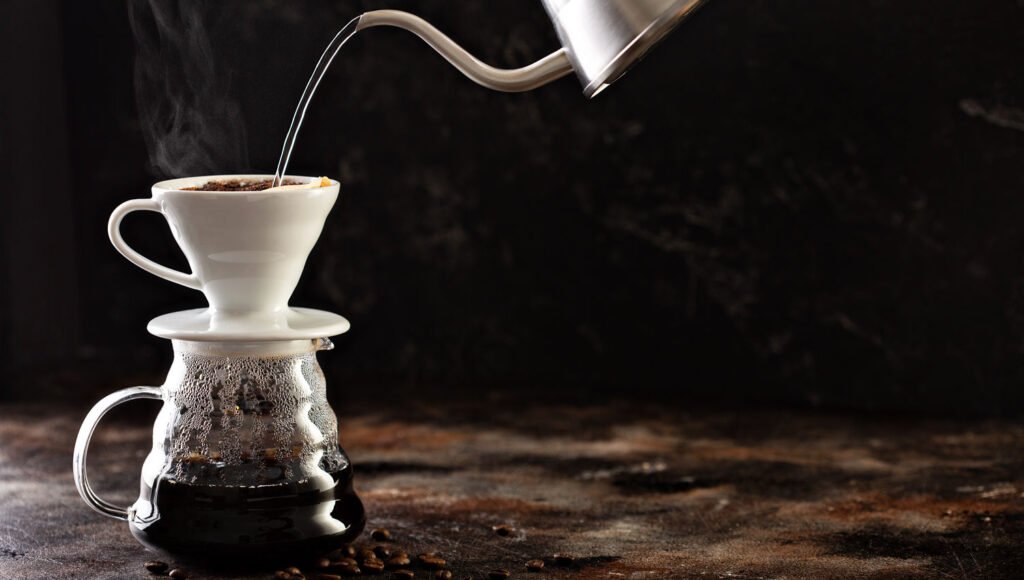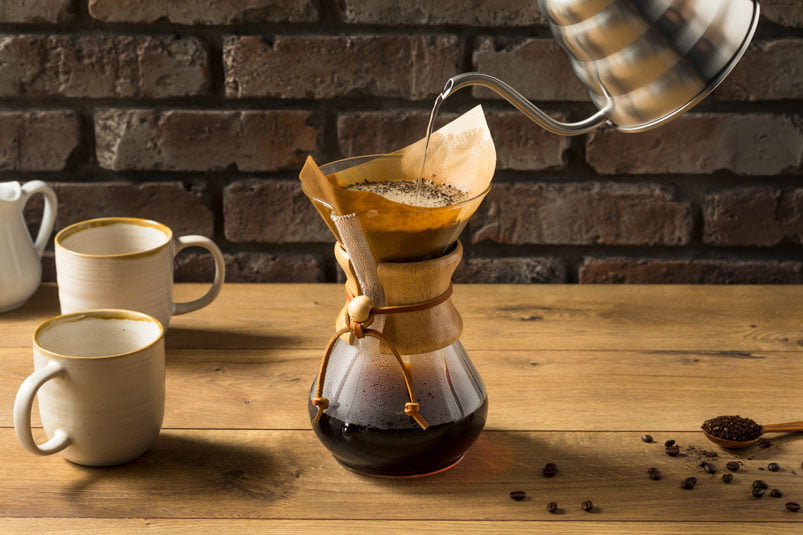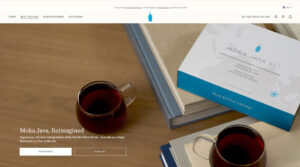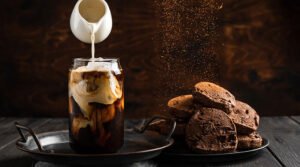Are you tired of your morning coffee routine and yearning for a brew that’s both rich in flavor and provides you with the ultimate control over your cup of joe? Look no further! Today, we’ll show you how to make pour-over coffee at home, a method that combines simplicity with the art of crafting exquisite coffee. Whether you’re a seasoned coffee enthusiast or just beginning your journey into the world of specialty coffee, the pour-over method promises a palette of rich and nuanced flavors, elevating your coffee experience to new heights.
But before we dive into the step-by-step process of creating your own pour-over masterpiece, let’s begin with an exploration of the pour-over cone itself and the numerous benefits it brings to your morning routine. We’ll also take a closer look at the essential equipment required to embark on this coffee adventure, emphasizing the importance of quality in each component. From the grinder to the kettle, filter paper to the cup, we’ve got you covered to ensure you make the most delicious coffee at home using a pour-over cone.

Step-by-Step Guide to Making Pour-Over Coffee at Home: Crafting Your Perfect Brew
For coffee lovers, there’s nothing quite like the experience of making your own pour-over coffee at home. The process is not just about caffeine; it’s an art that allows you to create a cup of coffee that suits your exact taste. In this guide, we’ll take you through each step of the journey, from preparing your equipment to mastering the finishing touches.
Preparing the Equipment: Grinder, Kettle, Filter Paper, and Cup
Choosing the Right Grinder and Kettle: The foundation of a great pour-over coffee is the quality of your coffee grounds and water. Start with a burr grinder that offers precise control over the grind size. The consistency of the grounds is crucial as it affects the extraction process. As for the kettle, opt for one with a gooseneck spout for a controlled and even pour.
Investing in high-quality equipment may seem like a significant upfront cost, but it’s a long-term investment in your coffee enjoyment. Quality grinders and kettles are designed to last and deliver a consistent, superior brew every time.
Importance of Quality Filter Paper: It’s easy to overlook the significance of filter paper, but it plays a pivotal role in your pour-over experience. Choose unbleached, oxygen-bleached, or natural brown filters to avoid any unwanted paper taste in your coffee. The paper should fit your cone’s size snugly, ensuring an even extraction.
Moreover, consider reusable metal or cloth filters, which are more eco-friendly and can enhance the overall flavor profile of your brew.
Measuring Out Coffee Beans for Brewing
Significance of the Coffee-to-Water Ratio: The golden rule of pour-over coffee is to maintain the right coffee-to-water ratio. This ratio depends on your personal preferences and the coffee strength you desire. Typically, a standard starting point is using one to two tablespoons of coffee for every six ounces of water. Adjust these proportions based on your taste, but remember that it’s all about finding your perfect balance.
Experimentation is key to finding your ideal ratio. Keep in mind that a finer grind and a higher coffee-to-water ratio will result in a stronger brew, while a coarser grind and a lower ratio will yield a milder flavor.
Guidelines for Different Coffee Strengths: If you’re new to pour-over coffee, it’s best to start with a medium roast coffee and a balanced ratio to get a sense of the flavors. As you become more familiar with the process, you can explore different coffee strengths. Lighter roasts tend to be brighter and more acidic, while darker roasts are richer and bolder. The coffee-to-water ratio and grind size should be adjusted accordingly.
Heating Water and Prepping the Cone
Guidance on the Ideal Water Temperature: The temperature of the water you use is crucial for extracting the desired flavors from your coffee grounds. Ideally, your water should be heated to a range of 195°F to 205°F (90°C to 96°C). Using water that is too hot or too cold can result in over-extraction or under-extraction, leading to undesirable flavors.
To achieve the right temperature, a gooseneck kettle with a built-in thermometer is a valuable tool. Additionally, using filtered water can help improve the taste of your coffee, as tap water with impurities may affect the flavor.
Pre-Wetting the Filter and Cone: Before you begin the brewing process, pre-wet the filter and cone with hot water. This helps eliminate any papery taste from the filter, preheats your brewing vessel, and ensures a consistent temperature throughout the pour-over process.
Pour a small amount of hot water into the center of the filter, allowing it to saturate the paper. Then, discard this water and place your cone on your chosen cup or carafe.
Pouring Water over Grounds in Cone

Elaboration on the Brewing Process, Including the Blooming Phase: The actual brewing process consists of multiple stages. After adding coffee grounds to the filter, start by pouring a small amount of water (about twice the weight of the coffee) over the grounds.
This initial pour, often referred to as the “bloom,” allows the coffee to release gases trapped in the freshly ground beans. You’ll notice the coffee bed bubbling and expanding as the gases escape. Let it bloom for about 30 seconds.
Once the bloom phase is complete, continue pouring water in a controlled, spiraling motion, starting from the center and moving outward. Maintain a steady, slow pour to ensure even extraction. Pour water in intervals, allowing it to pass through the grounds and into your cup or carafe.
Finishing Touches: Stirring & Waiting
When and How to Stir the Coffee: Stirring is an optional step but can help ensure even extraction, especially if you have a larger coffee bed or an uneven pour. Use a long, thin tool like a bamboo stirrer or chopstick to gently agitate the grounds by swirling in a circular motion. Be mindful not to disrupt the coffee bed too much, as this can lead to over-extraction.
Information on the Resting Time for the Brew: After you’ve poured all the water, allow the coffee to finish dripping. This resting time, often called “drawdown,” can take anywhere from 2 to 4 minutes, depending on your grind size, coffee-to-water ratio, and pouring technique. Patience is crucial during this phase, as it allows the coffee to reach its full flavor potential.
In mastering these key steps, you’ll be well on your way to brewing an exceptional cup of pour-over coffee at home, tailored to your exact taste preferences. As you refine your technique and experiment with different variables, you’ll discover the art and science of making coffee that’s truly your own. In the next sections of this guide, we’ll delve into common mistakes to avoid and share additional tips to elevate your pour-over coffee game even further. So, stay tuned as we continue our journey toward the perfect home-brewed cup of coffee.
Common Mistakes When Making Pour-Over Coffee: Navigating the Perils for a Perfect Brew
Embarking on the journey of making pour-over coffee at home is an exciting venture, but like any craft, it comes with its share of challenges. Fear not, aspiring home barista! In this section, we’ll explore common mistakes encountered in the pursuit of the perfect pour-over cup, all while emphasizing the importance of the keyword phrase “how to make pour-over coffee at home.
Not Using Freshly Ground Beans
Impact of Coffee Bean Freshness on Flavor: One of the cardinal sins in the world of pour-over coffee is the use of stale, pre-ground beans. Freshly ground coffee beans are the heart and soul of a great pour-over brew, as they preserve the delicate flavors and aromas that make this method so exceptional. The volatile compounds responsible for the nuanced taste begin to degrade within minutes of grinding, resulting in a lackluster and flat cup.
To truly savor the essence of your coffee beans, invest in a quality burr grinder and grind your beans just before brewing. This simple step can elevate your pour-over experience from ordinary to extraordinary.
Tips on Proper Coffee Storage: Proper storage is the key to preserving the freshness of your coffee beans. Keep them in an airtight container away from light, heat, and moisture. Avoid storing them in the refrigerator or freezer, as the fluctuating temperatures can lead to condensation, compromising the flavor. For the ultimate freshness, buy beans in small batches and replenish your supply regularly.
Not Allowing Enough Time for Brewing Process
Significance of Patience in the Brewing Process: Patience is a virtue, especially in the world of pour-over coffee. Rushing the brewing process can lead to under-extraction, resulting in a sour and weak cup. The magic happens when water gradually interacts with the coffee grounds, extracting the complex flavors that make each bean unique. Give your coffee the time it deserves, and you’ll be rewarded with a rich and well-balanced brew.
General Brewing Time Frame for Reference: While the exact brewing time can vary based on factors like grind size and coffee-to-water ratio, a typical pour-over process takes around 3 to 4 minutes. This includes the blooming phase and the subsequent steady pour. Use this timeframe as a starting point and adjust based on your taste preferences. Experimentation is key to finding the sweet spot for your perfect cup.
Using Too Much or Too Little Coffee
Consequences of Incorrect Coffee-to-Water Ratios: The coffee-to-water ratio is the compass guiding your journey to the perfect pour-over. Using too much coffee can lead to over-extraction, resulting in a bitter and overpowering taste. On the flip side, too little coffee can lead to under-extraction, producing a weak and sour cup.
Striking the right balance requires experimentation. Start with a standard ratio, such as 1:15 (1 gram of coffee to 15 grams of water), and adjust based on your taste preferences. Keep in mind that factors like grind size and brewing time also influence the final outcome.
Ways to Adjust the Ratio for Personal Preferences: Achieving the ideal coffee-to-water ratio is a personal journey. If your coffee is too strong, try using fewer grounds or increasing the water amount. For a stronger cup, experiment with a higher coffee-to-water ratio. Take note of the adjustments you make and the resulting flavors, gradually refining your pour-over technique to suit your unique taste.
Not Cleaning Equipment Properly
Importance of Maintaining Clean Equipment: Neglecting the cleanliness of your pour-over equipment can sabotage even the best coffee beans. Residual oils and coffee particles left behind can impart off-flavors to your brew, diminishing the overall quality. Regular cleaning is not only a hygiene practice but a commitment to preserving the integrity of your coffee.
Practical Tips for Cleaning and Maintenance: After each use, thoroughly rinse your pour-over cone, filter, and any other equipment with hot water. Periodically, use a mild detergent to remove any built-up oils or residues. If your pour-over cone is made of materials like glass or ceramic, consider giving it an occasional soak in a vinegar solution to eliminate mineral deposits.
Invest time in proper maintenance, and your pour-over equipment will reward you with consistently delicious cups of coffee.
In steering clear of these common pitfalls, you’re well on your way to mastering the art of pour-over coffee at home. Remember, each cup is a canvas for you to paint with the flavors and aromas that delight your senses. As we move forward in this guide, we’ll explore additional tips and tricks to further enhance your pour-over prowess. So, let’s continue our journey toward the perfect home-brewed cup of coffee, armed with the knowledge to overcome these potential stumbling blocks.
The Last Drop
In the pursuit of the perfect pour, simplicity and precision are the cornerstones of this craft. The pour-over cone, with its elegant design and the promise of control, transforms your kitchen into a coffee laboratory where every element contributes to the symphony of flavors in your cup.

Armed with the knowledge of how to make pour-over coffee at home, go forth and create your coffee masterpiece. Let each pour be an expression of your passion for the bean, a ritual that transforms the ordinary into the extraordinary. May your mornings be filled with the aroma of freshly brewed success, and may each sip bring you closer to the perfect cup.
Cheers to your pour-over prowess and the artistry that resides within each drop!








